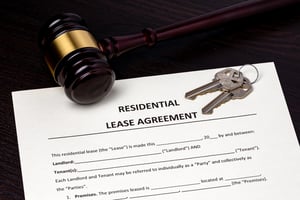 Under section 365 of the Bankruptcy Code, a debtor has a choice of either assuming or rejecting a lease while in a bankruptcy. If a lease is “assumed,” the debtor will retain the lease and remain responsible for their obligations under the terms of the lease.
Under section 365 of the Bankruptcy Code, a debtor has a choice of either assuming or rejecting a lease while in a bankruptcy. If a lease is “assumed,” the debtor will retain the lease and remain responsible for their obligations under the terms of the lease.
By assuming a lease, such as a vehicle lease, a debtor agrees to continue performing on the lease agreement and continues to make payments to the creditor, because the debtor seeks to continue receiving the benefits of the lease. If a debtor has defaulted on payments at the time their bankruptcy case is filed, the debtor may not assume the lease unless the debtor agrees to cure defaults on the payments, as well as agrees to provide adequate assurance of future performance on the lease. If a debtor rejects a lease, the debtor is terminating the lease and can discharge any debt that arises from the lease in a Chapter 7 or a Chapter 13 bankruptcy.
To reject a lease in a Chapter 7 bankruptcy, the debtor must disclose the lease in the bankruptcy schedules and indicate that the debtor’s intention is to reject the lease. In a Chapter 13 bankruptcy, the debtor’s intent to reject a lease will be indicated in the Chapter 13 plan drafted by their bankruptcy attorney. Upon rejection of a lease, a debtor is freed from the obligation to pay on the lease once the debtor receives their bankruptcy discharge. Even if the debtor owed money to the creditor prior to the filing of the bankruptcy case, that money owed will still be discharged in the bankruptcy.
CALL NOW FOR A FREE STRATEGY SESSION FROM A MN BANKRUPTCY LAWYER AT LIFEBACK LAW FIRM
To learn more about how your lease will be affected by bankruptcy, you should consult with an experienced bankruptcy attorney. Come see us at our new office in St. Paul, Minnesota, or come visit us at LifeBackLaw.com!


